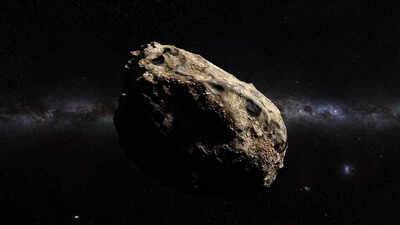Trending
Why asteroid 2024 YR4’s strange shape is a threat to the Moon and not Earth
In the field of space exploration and asteroid monitoring, some discoveries raise more eyebrows than others– and asteroid 2024 YR4 is one of them. When it was first detected, astronomers feared it might collide with Earth. However, after detailed tracking and analysis, scientists have now ruled out any threat to our planet.
In the field of space exploration and asteroid monitoring, some discoveries raise more eyebrows than others– and asteroid 2024 YR4 is one of them. When it was first detected, astronomers feared it might collide with Earth. However, after detailed tracking and analysis, scientists have now ruled out any threat to our planet. But there's a twist– while Earth is in the clear, experts say there’s still a chance the asteroid could hit the Moon.
So, what makes this asteroid stand out? From its orbit path to its speed, 2024 YR4 offers a closer look at the kind of objects passing through the space around Earth– and why they need to be carefully monitored.
When asteroid 2024 YR4 was first spotted by the Asteroid Terrestrial-impact Last Alert System (ATLAS) on December 27, 2024, it immediately caught scientists’ attention. According to a report presented by India Today, early data showed it could pass uncomfortably close to Earth– just 2.5 million kilometers away. While that may sound like a safe distance, in space terms, it’s considered relatively close.

As per the report, a new study published in The Astrophysical Journal Letters sheds light on asteroid 2024 YR4. Scientists estimate its diameter to be between 30 and 65 meters. What makes it especially interesting is its unusual, disc-like shape, similar to a hockey puck, and its rapid spin, completing a full rotation every 20 minutes.
One of the most surprising discoveries came after astronomers created a 3D model of the asteroid using data from the Gemini South telescope in Chile, media report suggests. Unlike most asteroids, which tend to be lumpy or irregular in shape, 2024 YR4 appears flat and circular.
As mentioned in the report, lead researcher Bolin explained, “This find was rather unexpected since most asteroids are thought to be shaped like potatoes or toy tops rather than flat disks.” This distinct form has raised new questions about how such a shape might affect the asteroid's movement and stability in space.
Along with its unusual shape, its fast spin has also caught scientists’ attention. While many asteroids rotate slowly, 2024 YR4 completes a full turn every 20 minutes. This rapid spin could influence how the asteroid behaves during close encounters with other space objects.

So, where did this strange asteroid come from? Based on its composition and orbit, scientists believe it likely originated from the main asteroid belt– the region between Mars and Jupiter that’s home to countless rocky bodies, as mentioned in the report. While most asteroids remain within that belt, it’s rare for one to come this close to Earth. Experts suggest that Jupiter’s powerful gravity may have nudged 2024 YR4 out of its original orbit, steering it toward our part of space.
As mentioned in the report, Bolin added, “We are a bit surprised about its origin in the central main asteroid belt, which is a location in the asteroid belt that we did not think many Earth-crossing asteroids could originate from.”

While Earth seems safe, the Moon still faces a minor risk. There’s a small chance– just a few percent– that 2024 YR4 could collide with the lunar surface. And since the Moon doesn’t have an atmosphere to break up space objects, any impact could leave a visible mark. Although the odds remain low, astronomers say they’ll continue to closely monitor the asteroid’s path in the months ahead.
End of Article
Follow Us On Social Media
Visual Stories
Tired of too many ads?










